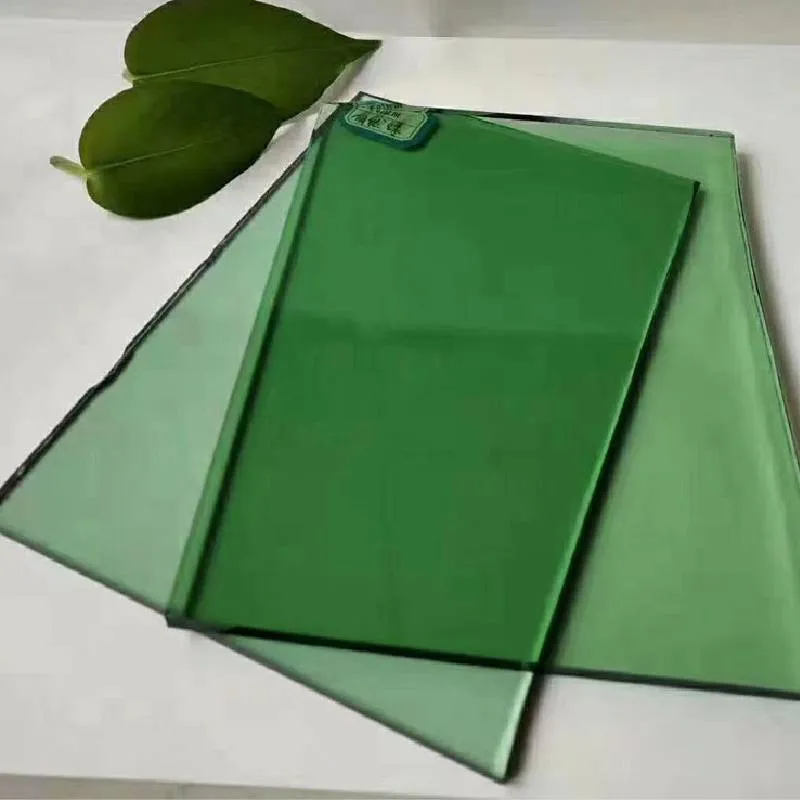نويابىر . 07, 2024 18:09
Understanding the Difference Between Tempered Glass and Regular Glass
When it comes to glass products, particularly in construction and design, two terms often come up tempered glass and regular glass. While both serve their purposes, they are fundamentally different in terms of strength, manufacturing processes, safety, and applications. Understanding these differences is essential for making the right choices for residential or commercial projects.
Manufacturing Process
The production of regular glass, also known as annealed glass, involves a straightforward process. It is manufactured by melting silica sand and other raw materials at high temperatures. Once formed, the glass is gradually cooled in an air atmosphere. This slow cooling process can lead to uneven internal stresses, making regular glass more vulnerable to breakage.
In contrast, tempered glass undergoes a more rigorous manufacturing process. After being formed, the glass is heated to temperatures exceeding 600 degrees Celsius and then rapidly cooled using air jets. This process, known as tempering, creates compressive stresses on the surface of the glass, which significantly enhances its strength. As a result, tempered glass is much tougher than regular glass and can withstand higher impact and thermal stress.
Strength and Safety
The most notable difference between tempered and regular glass lies in strength. Tempered glass is approximately five to six times stronger than the same thickness of regular glass. This exceptional strength makes tempered glass ideal for applications where safety and durability are critical, such as in shower doors, glass facades, and glass staircases.
In the event of breakage, tempered glass shatters into small, blunt pieces rather than sharp shards that can cause injury, thus providing an added safety feature
. Regular glass, on the other hand, can break into sharp, jagged pieces, posing a significant risk of injury.Thermal Resistance

Another key difference is thermal resistance. Tempered glass can withstand sudden changes in temperature and can handle thermal stress better than regular glass. This property is particularly useful in scenarios where glass is exposed to direct sunlight, such as in windows and glass walls. For instance, if the surface of a regular glass window heats up quickly on a sunny day, it may crack due to thermal stress. Tempered glass, however, is designed to endure these temperature fluctuations, making it a preferred choice for high-temperature environments.
Applications
Due to their different properties and characteristics, tempered glass and regular glass are used in different applications. Regular glass is generally used in situations where safety is not a primary concern and where aesthetics and cost are more important. Common applications include picture frames, furniture tops, and some types of windows.
In contrast, tempered glass applications are more extensive, particularly in settings that prioritize durability and safety. This includes automotive glass, glass doors, shower enclosures, and building facades. Even in high-traffic environments, such as public spaces or commercial buildings, tempered glass is often used because of its ability to resist impact and provide additional safety.
Cost Considerations
While tempered glass offers numerous advantages, it also comes with a higher price point compared to regular glass. The additional manufacturing processes and safety features inherent in tempered glass contribute to its increased cost. For projects where budget constraints are a significant concern, the cost difference between these two types of glass may influence the decision.
Conclusion
In summary, the differences between tempered glass and regular glass are vital for homeowners, architects, and builders to understand. From their manufacturing processes and strength characteristics to safety features and applications, each type of glass serves its own purpose. When selecting glass for a particular project, considering the specific attributes of tempered and regular glass will ensure that the right material is chosen to meet both aesthetic and functional requirements. In a world where safety and durability are paramount, opting for tempered glass can be a wise decision that ultimately enhances peace of mind and adds value to your space.
The Role of Mirror Glass in Luxury Interior Design
NewsJun.23,2025
The Best Textured Glass for Bathroom Windows
NewsJun.23,2025
Residential Glazing Energy Efficiency Requirements
NewsJun.23,2025
Float Glass Uses
NewsJun.23,2025
Clear Float Glass For Solar Panel Covers
NewsJun.23,2025
Benefits Of Using A Glass Mouse Pad Over Traditional Ones
NewsJun.23,2025